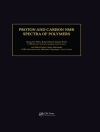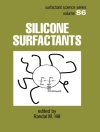This first book devoted to this hot field of science covers materials with bimodal, trimodal and multimodal pore size, with an emphasis on the successful design, synthesis and characterization of all kinds of hierarchically porous materials using different synthesis strategies. It details formation mechanisms related to different synthesis strategies while also introducing natural phenomena of hierarchy and perspectives of hierarchical science in polymers, physics, engineering, biology and life science.
Examples are given to illustrate how to design an optimal hierarchically porous material for specific applications ranging from catalysis and separation to biomedicine, photonics, and energy conversion and storage.
With individual chapters written by leading experts, this is the authoritative treatment, serving as an essential reference for researchers and beginners alike.
Jadual kandungan
Preface
PART I: Introduction
INSIGHTS INTO HIERARCHICALLY STRUCTURED POROUS MATERIALS: FROM NANOSCIENCE TO CATALYSIS, SEPARATION, OPTICS, ENERGY, AND LIFE SCIENCE
Introduction
Synthesis Strategies to Hierarchically Structured Porous Materials Emerging Applications of Hierarchically Structural Porous Materials
Conclusions
HIERARCHY IN NATURAL MATERIALS
Natural Materials as a Source of Inspiration in Materials Science
Hierarchies Based on Fiber Architectures
Liquid Crystalline Assemblies, Clues to Mimic Hierarchical Structures
Mineralized Biological Tissues, Models for Hybrid Materials
Concluding Remarks
PART II: Synthesis Strategies to Hierarchically Structured Porous Materials
Hierarchically Structured Porous Materials by Dually Micellar Templating Approach Introduction
Nanocasting – True Liquid Crystalline Templating 3.3 Basics of Micellization
Mixed Surfactant Solutions
Hierarchical Self-Assembly of Concentrated Aqueous Surfactant Mixtures – Hierarchical Mesoporous Structures
Conclusions
COLLOIDAL CRYSTAL TEMPLATING APPROACHES TO MATERIALS WITH HIERARCHICAL POROSITY
Introduction and Historical Overview
The Preparation of 3DOM Materials
3DOM Materials with Intrinsic Secondary Porosity
Hierarchical Materials from Multimodal Colloidal Crystal Templates Hierarchical Materials from Combinations of Soft and Colloidal Crystal Templating
Hierarchical Opals and Related Structures
Conclusions and Outlook
TEMPLATING OF MACROPOROUS OR SWOLLEN MACROSTRUCTURED POLYMERS
Introduction
Macroporous Polymer Gels Formed in Amphiphile Solutions
Macroporous Starch or Agarose Gels
Polymer Foams
Polymeric Films and Fibrous Mats
Polymer Spheres
Closing Remarks
BIOINSPIRED APPROACH TO SYNTHESIZING HIERARCHICAL POROUS MATERIALS
Introduction
Hierarchical Porous Materials from Biotemplates
Hierarchical Porous Materials from the Biomimetic Process
Conclusions and Perspectives
POROUS MATERIALS BY TEMPLATING OF SMALL LIQUID DROPS
Introduction
Emulsion Templating
Breath Figures Templating
Conclusions
HIERARCHICALLY POROUS MATERIALS BY PHASE SEPARATION: MONOLITHS
Introduction
Background and Concepts
Examples of Materials with Controlled Macro/Mesopores
Summary
FEATURE SYNTHESIS OF HIERARCHICALLY POROUS MATERIALS BASED ON GREEN EASY-LEACHING CONCEPT
Introduction
Hierarchically Structured Porous Materials Synthesized by Easy-Leaching Air Templates
Hierarchically Structured Porous Materials Synthesized by Easy-Leaching Ice Template
Hierarchically Structured Porous Materials Synthesized by Easy Selective-Leaching Method
Other Easy-Leaching Concepts in the Synthesis of Hierarchically Structured Porous Materials
Summary
INTEGRATIVE CHEMISTRY ROUTES TOWARD ADVANCED FUNCTIONAL HIERARCHICAL FOAMS
Introduction
Organic-Inorganic Poly HIPEs Prepared from Water-in-Oil Emulsions
Organic-Inorganic Poly HIPEs Prepared from Direct Emulsions
Particles-Stabilized Poly HIPE
Conclusion and Perspectives
HIERARCHICALLY STRUCTURED POROUS COATINGS AND MEMBRANES
Introduction
The Multiple Templating Strategy
Dynamic Templating
Building Block Assemblies for Photonic Band Gap Materials
Ink-Jet Printing and Cooperative Self-Assembly
Foaming Processes
Filtration Membranes
Conclusion
SELF-FORMATION PHENOMENON TO HIERARCHICALLY STRUCTURED POROUS MATERIALS
Introduction
History of Self-Formation Phenomenon
Features of Self-Formation Phenomenon
Structural Features of Hierarchical Porous Materials Based on the Self-Formation Phenomenon
The Mechanism of Self-Formation Procedure
Controlled Synthesis Based on the Self-Formation Phenomena Development of Synthesis Methodology
Applications and Hierarchical Catalysis
Summary
AUTO-GENERATED HIERARCHICAL MESO-MACROPOROUS ALUMINOSILICATE MATERIALS WITH HIGH TETRAHEDRAL AL CONTENT FROM THE SINGLE-MOLECULAR ALKOXY-PRECURSOR (SMAP) STRATEGY
Introduction
Hierarchically Structured Meso-Macroporous Aluminosilicates
Conclusion
ZEOLITES WITH HIERARCHICALLY POROUS STRU
Mengenai Pengarang
Bao-Lian Su is Director of the Research Centre for Nanomaterials Chemistry and of the Laboratory of Inorganic Materials Chemistry at the University of Namur; Vice-Director of State Key Laboratory of Advanced Technology for Materials Synthesis and Processing at the Wuhan University of Technology.
Clément Sanchez obtained his Ph D degree from Paris University in 1981 and currently holds a post as Professor of Chemistry of Hybrid Materials at the Collège de France. He is also the Director of the Laboratoire de Chimie de la Matière Condensée de
Paris at the University P. M. Curie.
Xiao-Yu Yang is a Research Fellow of the FNRS (National Foundation of Scientific Research) at the University of Namur (FUNDP) and Secretary-General of International Materials Forum (IMF) and assistant Director of the Laboratory of Living
Materials at the Wuhan University of technology.












